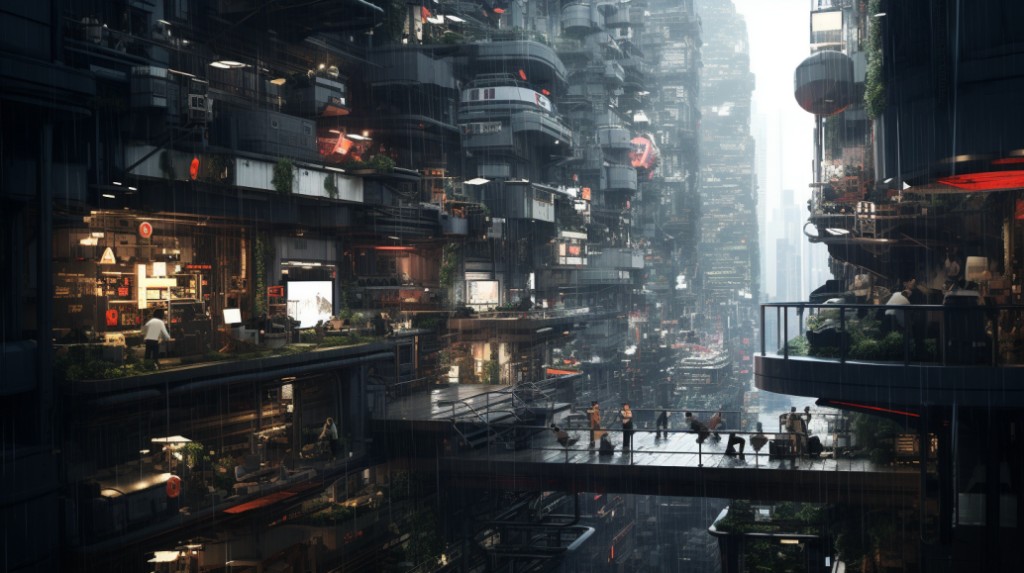Harmony Heights was the pet project of Adrian Vellor, a visionary philanthropist and tech investor whose idealism and dreams of a better future were driven by technology. Vellor, a child of the tech boom era, firmly believed that AI and cybernetic technologies could be used to improve the quality of life for everyone, not just the elite. He saw Harmony Heights as an opportunity to create a community based on the principles of sustainability, equality and technological support.
Vellor’s commitment and wealth made it possible to build the complex in the 2020s, equipped with the most advanced technologies of the time: self-regulating air conditioning systems, energy efficiency through smart home systems and social AI assistants to help residents in their daily lives. He wanted to create a blueprint for future housing projects, a model for social progress.
In the first few years after its completion in the 2020s, the complex was considered a jewel of urban living, a place where people lived surrounded by green spaces and modern amenities. Residents enjoyed the integration of smart home technologies and robots that made everyday life easier.
But with Vellor’s unexpected passing in the late 2040s, Harmony Heights lost its strongest supporter and protector. The vision faded, and without the necessary investment, the complex began to fall into disrepair. The advanced technologies were no longer maintained, the AI systems became outdated, and social programs were cut. As the city’s economic disparities increased, many of the original residents left the area, and the complex increasingly became a haven for those left behind by the rapid development.
The civil unrest of the 2070s left a deep scar on the community and the building itself. Cybernetically enhanced soldiers and combat robots used in the fighting found themselves as outcast relics in the streets of Entropy Estates. They became silent witnesses to the former promise of a better future and the failure of this utopia.
The building’s old AIs and control units, now relics of a bygone era, became symbols of Vellor’s forgotten goals. Stories circulated among the residents about the “ghosts” of Harmony Heights – AIs that were still trying to execute their original programming commands as if they were the last guardians of Vellor’s dream.
Today, at the end of the 2090s, the once proud facades are covered in graffiti, the infrastructure groans under the weight of decay, and the term “Entropy Estates” has become established as a bitter irony.
The new name is not just a designation, but also a commentary on the social dynamics of the city and the transience of human endeavor. Crime and violence are visible signs of the tensions that pervade the community. Yet there is also humanity here – in the collective efforts to support each other, in the small acts of kindness that contrast with the harsh reality, and in the simulated society of the obsolete androids that once provided comfort and are now silent companions in solitude.
The inhabitants of Entropy Estates are a mixture of those who long for the lost era of technology and those who simply want to survive. They have formed a community defined not by technology, but by human resilience and interdependence. Here, in the ruins of progress, they hold on to hope and form a new home out of adversity.



